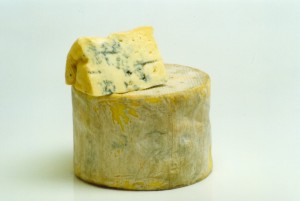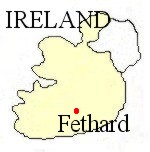
|
|
||||||
Jane and Louis Grubb started making Cashel Blue in the 1980's and since then it has gained an enviable international reputation as Ireland's most famous blue cheese. It takes its name from the Rock of Cashel, a bold outcrop overlooking the Tipperary plains. Cashel Blue is made from the milk of Jane and Louis' own herd of 110 Fresian cows. It is made in a similar way to Roquefort although it is softer, more moist and less salty. The milk is pasteurised, cooled, inoculated with Penicillin roquefortii and left at 32ºC to allow the acidity to rise. Rennet is then added and it is left to set for an hour. The curd is then cut and left for another hour before being removed from the vat in scrim cloth (raw Irish linen), drained and tipped straight into the moulds. For the next two or three days it is left to drain and turned from time to time until it is dry enough for salting and piercing. The cheese is placed on a turntable and rotated whilst being pierced with long stainless steel needles. This allows air to enter the cheese and leads to the development of the blue mould. Before being wrapped in distinctive gold foil, the cheeses are washed to remove the blue mould from the outside. When young the cheese is firm and relatively moist with a fresh and slightly sharp flavour. With ageing it develops a melt-in-the-mouth creaminess and a rounder, mellower flavour. Cashel Blue can be matured for up to six months. All milk used for the cheese is now pasteurised. The very best cheese is made from April to October when the cows are out to pasture, but Cashel Blue is still excellent throughout the year. Each cheese is 12cm in diameter, 12cm in height, weighs 1.5kg and has a fat content of 54%. Cashel Blue is excellent on the cheese-board and is a favourite for cooking since it melts smoothly and retains its depth of flavour. Click here or press your 'Back' button to return |
|
||||||
| All articles © www.teddingtoncheese.co.uk | |||||||
